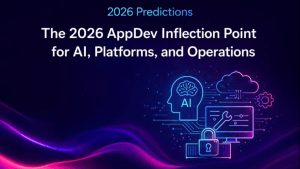The Prodacity event in Nashville was more than just another tech conference—it was a gathering of the people driving real change in government technology. Between deep discussions on software modernization and off-the-record insights on government restructuring, one thing was clear: the people in this room are ready to shake things up.
And let’s be honest, we learned a few other things along the way. First, Colorado green chili is no match for New Mexico’s. Second, Nashville considers mac and cheese and peach cobbler vegetables. And third, government tech is undergoing a seismic shift, and those who embrace modernization will lead the way.
The Shift Toward Continuous Modernization
One of the strongest messages from Prodacity 2025 was that modernization isn’t a one-time event—it’s an ongoing evolution.
Joe Szodfridt highlighted the reality that every system is legacy the day it’s built. Modernization efforts need to be continuous, focusing on small, iterative improvements rather than attempting massive, disruptive overhauls. Too often, organizations get stuck waiting for the “right time” to modernize, when in reality, incremental progress is the best approach.
Edward Hieatt reinforced this in his session on continuous delivery, explaining that CD isn’t just about speed—it’s about predictability. The goal isn’t to push code as fast as possible, but rather to ensure that business value is delivered consistently and reliably, even as requirements shift. The best development teams optimize for smooth, low-volatility deployment patterns, rather than trying to operate in a constant state of firefighting.
Reducing Friction to Improve Flow
Friction is a silent killer of progress, and government agencies are particularly vulnerable to it. Karen Martin’s discussion on value stream transformation illustrated how inefficiencies—whether in approvals, handoffs, or communication—can bring even the best-intentioned projects to a grinding halt.
Government organizations often attempt to optimize individual processes without considering the entire workflow. A perfect example is improving lab result turnaround times in hospitals, only to realize that patient care isn’t improving because bottlenecks exist elsewhere in the system. The same is true for software—clean code means nothing if it’s stuck in a testing queue for weeks. Value stream thinking requires looking at the entire delivery pipeline to remove systemic obstacles, not just local inefficiencies.
Empowering Problem-Solvers, Not Just Implementing Tools
Steve Spear drove home a crucial point in his session: Government agencies don’t just need better technology; they need better problem-solvers.
The Toyota Production System provides a powerful analogy. Toyota consistently outperforms competitors because its employees are empowered to solve problems at every level. This model applies directly to government technology teams. Organizations that focus on developing people into critical thinkers and fast problem-solvers will see far better results than those that simply throw money at new tools.
One of the biggest frustrations attendees voiced was how difficult it is to remove low performers from government positions. In many agencies, the hiring and firing process is so bureaucratic that underachievers are able to coast for years, while high-performers pick up their slack. This leads to low morale and burnout, making it even harder to drive meaningful change.
With the ongoing restructuring of government agencies, some attendees speculated that we could see a shift toward a more horizontal, agile government structure, similar to what’s happening in the private sector. A less hierarchical, more flexible system could enable faster decision-making and innovation—something that government agencies desperately need.
The Role of AI, Automation, and Security in Government Tech
AI and automation are powerful tools—but they are not magic solutions. Several speakers emphasized that automation alone won’t solve government inefficiencies—it must be implemented strategically and supported by strong leadership.
Joe Szodfridt stressed that automation needs to be paired with human expertise. Too often, organizations deploy automation tools without understanding their limitations, leading to inefficiencies rather than efficiencies.
DJ Angelini from Palantir tackled another common concern: Does buying commercial platforms mean losing control? The answer, surprisingly, is no. Well-designed platforms actually reduce complexity and enable teams to focus on mission-critical work, rather than spending time reinventing the wheel.
Security was another major focus of the event, with Clinton Herget and Luke Strebel addressing the challenges of DevSecOps in government. Many agencies still treat security as a separate, final-stage checklist, which creates vulnerabilities and slows down software delivery. The solution? Security must be integrated into the development process itself, ensuring compliance without adding unnecessary friction.
Looking Ahead: What’s Next for GovTech?
The conversations at Prodacity 2025 made it clear that change is coming to government technology, whether agencies are ready or not.
One of the biggest shake-ups has been the introduction of DOGE (Department of Government Efficiency), a restructuring effort designed to streamline operations and reduce red tape. Many attendees expressed concerns about job stability and team restructuring, but there was also a strong sense of optimism that the end result will be a more modern, responsive government.
A major area of frustration remains the government hiring and firing process. Several attendees pointed out that underperforming employees can linger for years due to bureaucratic protections. One government technologist called it “a two-year bureaucratic nightmare that resets itself at the last minute.” Reforming this process could increase accountability, improve morale, and ensure that government teams are composed of mission-driven individuals.
If restructuring efforts lead to a more modern, private-sector-inspired approach to government operations, we could see the first real steps toward an agile, efficient, and innovative government.
Final Thoughts: A Bright Future for GovTech
The energy at Prodacity 2025 was inspiring—government technologists are ready to drive innovation, eliminate inefficiencies, and create a more accountable, streamlined system. The changes ahead won’t be easy, but with the right people, systems, and processes in place, the future of govtech looks bright.
To everyone who attended: keep pushing for change, keep solving hard problems, and we’ll see you next year at Prodacity 2026!
To see all of our coverage, please click here.


